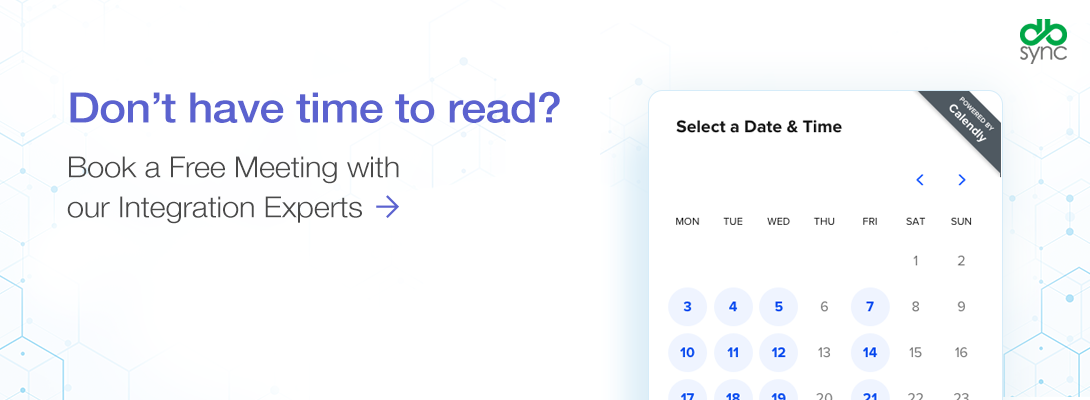Ways to Reduce Data Redundancy
Data gives businesses the ability to make effective decisions based on facts rather than speculation. With the right data on hand, businesses can make informed decisions that can further growth and success. This is the power of data; it can make or break a business, depending on how well it is used.
When it comes to dealing with large data sets, data duplication can be a major challenge for an organization. Servers are the destination where all data resides. Therefore, it is very important to ensure that only useful and important information is provided there.

What is Data Redundancy?
Data duplication occurs when the same piece of data is stored in two or more locations. This is common in most businesses. As more and more companies move from side-by-side information to the use of a database, they find that their database is full of duplicates. While it may be challenging to synchronize – or even gain – duplicate data entry, understanding how to reduce and track data loss effectively can help reduce a business’s long-term static problems.
How Can Data Redundancy Affect a Business?
Data inconsistency
When you are unaware of data redundancy, your organization can be at risk. If the same data is present in multiple formats or tables, analysis becomes difficult, as the data is biased at best, irrelevant at worst. This makes data-driven decisions challenging.
Data corruption
Data corruption occurs when something damages or causes errors in the information during the storage, transfer, or creation process. This means that storing several copies of the same data can create more opportunities for corruption.
Increase in database size
Data redundancy may increase the size and complexity of a database, making it more of a challenge to maintain. A larger database can also lead to longer load times and a great deal of frustration for employees who will have to spend more time completing daily tasks.
Increased storage cost
When more data is created because of redundancy, storage costs increase. This can be a serious issue for organizations trying to keep costs low in order to increase profits and meet their goals. In addition, implementing a database system can become more expensive.

How to Reduce Data Redundancy
1. Applying master data
Master data is the sole source of common business data that a data administrator shares across different systems or applications. While master data doesn’t reduce the incidences of data redundancy, it enables organizations to apply and work around a particular level of data redundancy. Leveraging master data ensures that an organization can update a single piece of information if it changes. This system ensures that redundant data remains up-to-date and offers the same information.
2. Normalizing databases
Database normalization involves efficiently arranging data in a database to ensure redundancy elimination. This process ensures that a company’s database contains information that appears and reads similarly throughout all records. Normalizing data typically includes arranging a database’s columns and tables to ensure they correctly enforce their dependencies. Various companies have special sets of criteria regarding data normalization, and thus, different approaches to data normalization. For example, a company may wish to normalize a province category with two digits, while another may opt for the full name.
3. Remove unused data
Another factor contributing to data redundancy is preserving the data pieces that the organization no longer requires. For example, organizations may move customer data to a new database and keep the same data in the old one. This can lead to data duplication and storage waste. Organizations can avoid this redundancy by promptly deleting the data no longer required.
4. Data integration
Efficient data redundancy is possible. Many organizations focused on customer interactions have Customer Relationship Management (CRM) systems integrated with other business software (like accounting) which eliminates redundant data and provides more insightful reports and improved customer service.

Benefits of Data Redundancy
Data redundancy is often considered a bad thing, but there are a number of reasons that data redundancy makes sense, especially as part of backup and security protocols. When intentional – as part of an overall data management plan – it provides a number of benefits and supports numerous use cases.
Better information protection: Intentional data redundancy can enhance information protection by protecting the organization’s data from breaches. It is also challenging for cyberattacks to target considerable amounts of data simultaneously if all an organization’s data is in different locations.
Increase data access: Some storage locations may be more easily accessible than others if an organization keeps its data in several locations. This ensures that different users within the organization can access several data entry points and enjoy faster data access speeds.
Data accuracy: A data management system can assess discrepancies by having several locations for the same data, improving the data’s accuracy. Different levels of data storage can subsequently enable efficient quality assurance.
Better data analysis: Organizations that store significant amounts of data typically use it to analyze trends and make reports for a company or a client. This requires accurate data, which companies can guarantee through intentional data redundancy.
Using Replication and Redundancy for High Availability
Reliable replication ensures that the most recent data is available to customers across all data centers, even in cases of server failure. It is very useful in improving the availability of data, as data is copied from one server to another so that all the users can share the same consistent data. The result is a distributed database in which users can access data relevant to their tasks without interfering with the work of others.
Data replication encompasses duplication of transactions on an ongoing basis. Data is consistently updated and synchronized with the source. However, in data replication, while data is available at different locations, a particular relation has to reside in only one location.
Companies should implement a reliable data management system to reduce data redundancy and keep only the data that helps their business progress.
Conclusion
Random data reductions can be a significant problem for organizations. Therefore, it is important to deliberately delete as much unneeded/unwanted data as possible, while understanding the value of redundancy for backups and improved security. Having all of your systems integrated makes it easier to keep records and finances up to date, access data more and is less costly to secure.
Want to Try Out DBSync Salesforce Replication Developer Edition Free Forever Trail? Click Here to Download Now

